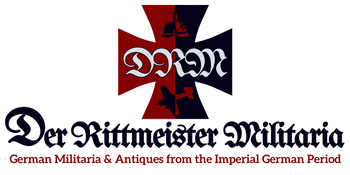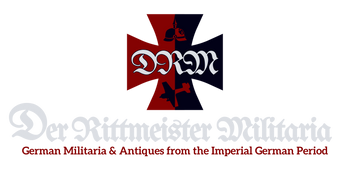Prussia (Königreich Preußen)
CLICK HERE FOR ALL PRODUCTS RELATED TO PRUSSIA
- Official Name: Kingdom of Prussia (Königreich Preußen)
- Capital: Berlin
- Motto: "Suum Cuique" (To Each Their Own)
- Established: 1701
- Dissolution: Officially abolished by the Allied Control Council in 1947.
-
Key Symbols:
- Black Eagle (symbol of sovereignty)
- Flag: Black and white horizontal stripes with the black eagle.
Geographical Overview
-
Location:
At its height, Prussia stretched from the Rhine River in the west to Lithuania in the east. Key cities included Berlin, Königsberg (modern-day Kaliningrad), Danzig (modern-day Gdańsk), and Cologne. -
Size:
Largest state within Imperial Germany, encompassing about two-thirds of its territory. -
Land Features:
- Northern plains: Fertile lands suited for agriculture.
- Eastern territories: Dense forests and marshlands.
- River systems: Oder, Elbe, and Vistula Rivers were crucial for trade and transportation.
Historical Timeline
-
Pre-Kingdom Era:
- 1525: The Duchy of Prussia established from the secularized lands of the Teutonic Order.
- 1618: Unified with Brandenburg under the Hohenzollern family.
-
Kingdom of Prussia (1701–1918):
- 1701: Frederick I crowned King in Prussia. This marked Prussia's transition from a duchy to a kingdom.
- 1740–1786: Frederick II (Frederick the Great) brought territorial expansion through the War of Austrian Succession and the Seven Years' War.
- 1806: Prussia suffered defeat against Napoleon and was reduced in size.
- 1815: Following Napoleon's defeat, Prussia regained lands and became a leading force in the German Confederation.
- 1862: Otto von Bismarck became Prime Minister and architect of German unification.
- 1871: Unified Germany was proclaimed under Prussian leadership with Wilhelm I as Emperor.
-
Decline (1918–1947):
- 1918: Abolition of the monarchy following World War I.
- 1947: Official dissolution of Prussia by the Allied Powers, erasing it as a political entity.
Notable Rulers and Leaders
- Frederick I (1701–1713): First King of Prussia, focused on cultural development.
- Frederick William I (1713–1740): Known as the "Soldier King," he created the foundation of Prussia's military strength.
- Frederick the Great (1740–1786): A military genius and Enlightenment patron, expanded Prussia’s territory significantly.
- Otto von Bismarck (1815–1898): Chancellor who orchestrated German unification under Prussian dominance.
Military and Political Strength
-
Military Innovations:
- Development of the General Staff system, setting the standard for modern militaries.
- Use of conscription to maintain a standing army.
- Victories in wars like the Franco-Prussian War (1870–1871), which cemented Prussia's dominance.
-
Economic Development:
- Industrial powerhouse during the 19th century, particularly in coal, steel, and railroads.
- Development of efficient taxation and administrative systems.
Cultural Contributions
-
Education:
- Prussia pioneered compulsory primary education (1763).
- Founded prestigious institutions like the University of Berlin.
-
Arts and Philosophy:
- Figures like Immanuel Kant, Johann Wolfgang von Goethe, and Alexander von Humboldt flourished under Prussian patronage.
-
Architecture:
- Iconic landmarks include the Brandenburg Gate and Sanssouci Palace.
Fall of Prussia
-
World War I (1914–1918):
- Germany's defeat and the abdication of Wilhelm II marked the end of the Prussian monarchy.
-
Weimar Republic (1919–1933):
- Prussia lost much of its autonomy but remained the largest state in Germany.
-
Nazi Era (1933–1945):
- Prussia’s identity was absorbed into Nazi Germany, with its structures dismantled.
-
Post-WWII (1947):
- Prussia was officially dissolved by the Allied Control Council. Its eastern territories were divided between Poland and the Soviet Union.
Connections to Products
-
Military Items:
- Pickelhaube Helmets: Iconic spiked helmets used during the 19th and early 20th centuries.
- Iron Cross Medals: Symbolic of Prussian and later German military distinction.
-
Cultural Artifacts:
- Porcelain from Meissen: A luxury product tied to Prussian elite culture.
- Historical Maps and Documents: Featuring territories and administrative systems.
-
Uniforms and Regalia:
- Items like Hussar uniforms or royal sashes evoke Prussian aristocracy.







